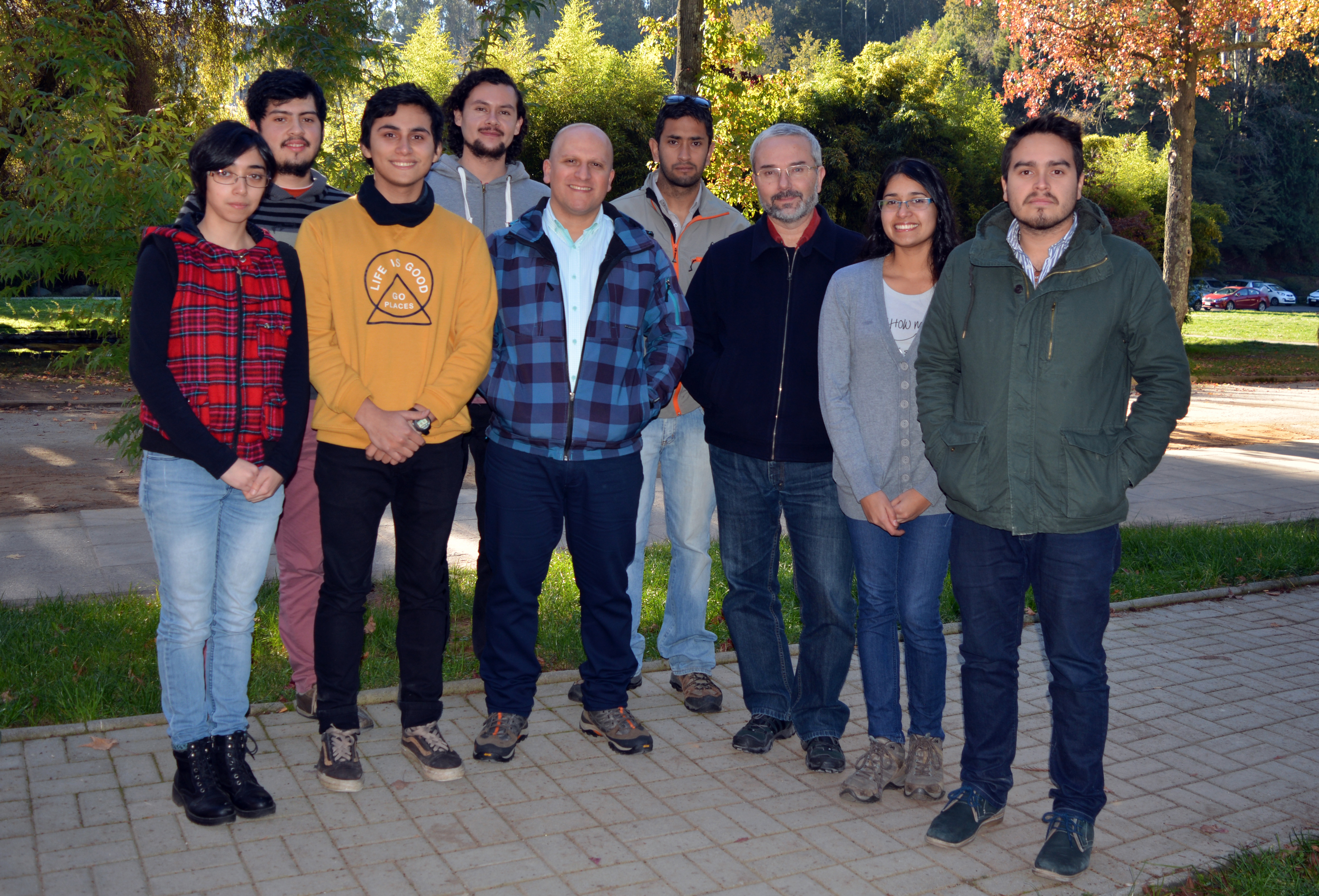Stellar Variability

The Stellar Variability Group is led by the astronomer Ronald Mennickent, PhD from the Pontificia Universidad Católica de Chile. The main topic research of this group nowadays is about Double Periodic Variables (DPVs), discovered in 2003 by R. Mennickent and collaborators.
A DPV is a type of interactive binary star showing a cyclic mass loss characterized by a short periodicity and a long periodicity, hereafter their name. For more than ten years, the group has been studying these systems and in 2014 they doubled the number of known DPVs in the galaxy, however only a 5% of them has been characterized. Now, the group is focusing on that task.
Recently they published their results on the study of the interacting binary and DPV AU Mon. AU Mon presents the “Algol paradox”, i.e. a close binary with the peculiarity that the more evolve star is the less masive one of the system. An unusual scenario according to stellar evolution because in theory, the more massive stars evolve faster than the less masive ones. This is explained by the mass transfer from the more evolved star to its companion, forming an accretion disk. This system is very important because not only shows an orbital periodicity, but also a long scale periodicity, with a period of 30 or 32 times the orbital period. The origin has not been explained yet. It has been proposed that the long periodicity is produced by cyclic mass loss. The star is constantly losing mass through winds, for which there is observational evidence. The mass loss should produce a change in the orbital period, but this is not observed. Why the orbital period remains constant even when mass loss occurs? This is the main question that Ronald Mennickent and his team are trying to answer by studying the Au Mon system.
“There is an equation that describes how much the orbital period changes due to mass transfer and another one describing how much the orbital period changes due to angular momentum loss. We propose that the mass transfer and the mass and angular momentum losses are coupled in such a way that the orbital period remains constant, even at high mass transfer rate regimes. We find a condition that mantains the orbital period constant because there are two phenomena occurring in a syncronized way: of all the mass transfer of one star to the other, more or less of the 50% must be lost, in that case the orbital period remains constant. From all the mass transferred somehow the system manages to lose half of the mass through winds”, explains R. Mennickent.
If this is the correct answer for the constancy in the orbital period then it could be applied to all DPVs because this phenomenon is a characteristic of all these systems. “We continue studying DPVs, specially eclipsing binaries, because we can obtain more information about their physical parameters. We are characterizing objects in the Galaxy and in the Large Magellanic Cloud. We are finishing a long run of observations of peculiar DPVs. Several undergraduate and graduate students from the Department are working in this group” adds Mennickent. For example, Hernán Garrido, PhD student, is studying a close interacting binary system with a hot giant star in a 200 days orbit around an object that is not visible, because of an obscure circumstellar disk. This object presents a double spectrum, which can be explained through bipolar winds. These type of systems are known as post-AGB binary systems. The student Mauricio Cabezas started to investigate the fundamental parameters and the mass outflows of the close binary V356 Sgr.
There are other areas that the team is also involved. One of them are Be stars, hot stars that rotates near the critical velocity, these stars form a disk around them for a still unknown process. Gustavo Aguayo, a master student at the Department is studying these objects, together with other undergraduate students. Daniela Aedo, undergraduate student from the Department, is also working on these stars, she studies methods to measure the rotation of Be stars, under the joint supervision of Michel Curé (U. de Valparaiso) and R. Mennickent. Other subjects that the group is investigating are the stellar winds and Wolf-rayet stars, these objects are studied by Alex Gormaz, recently graduate student from our department.






